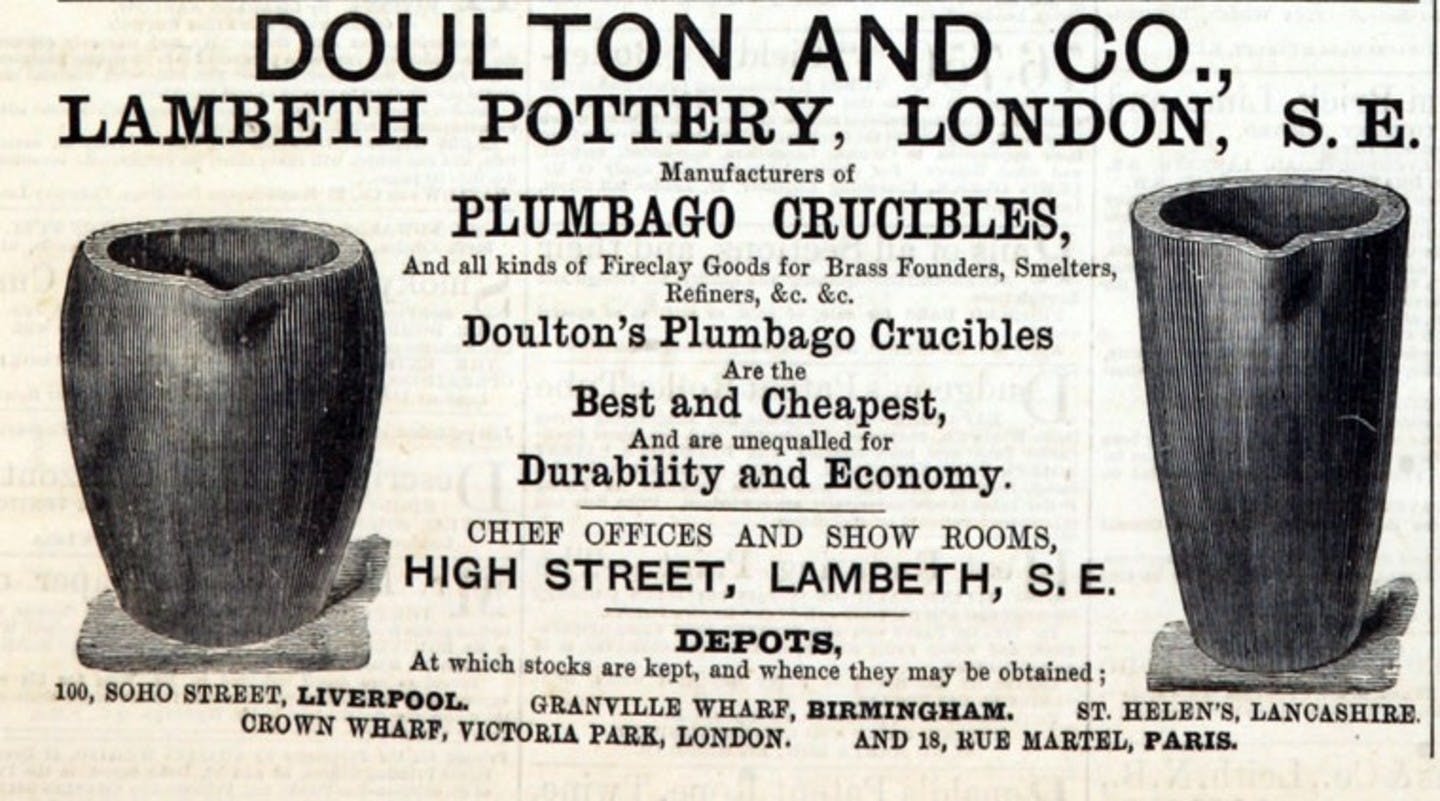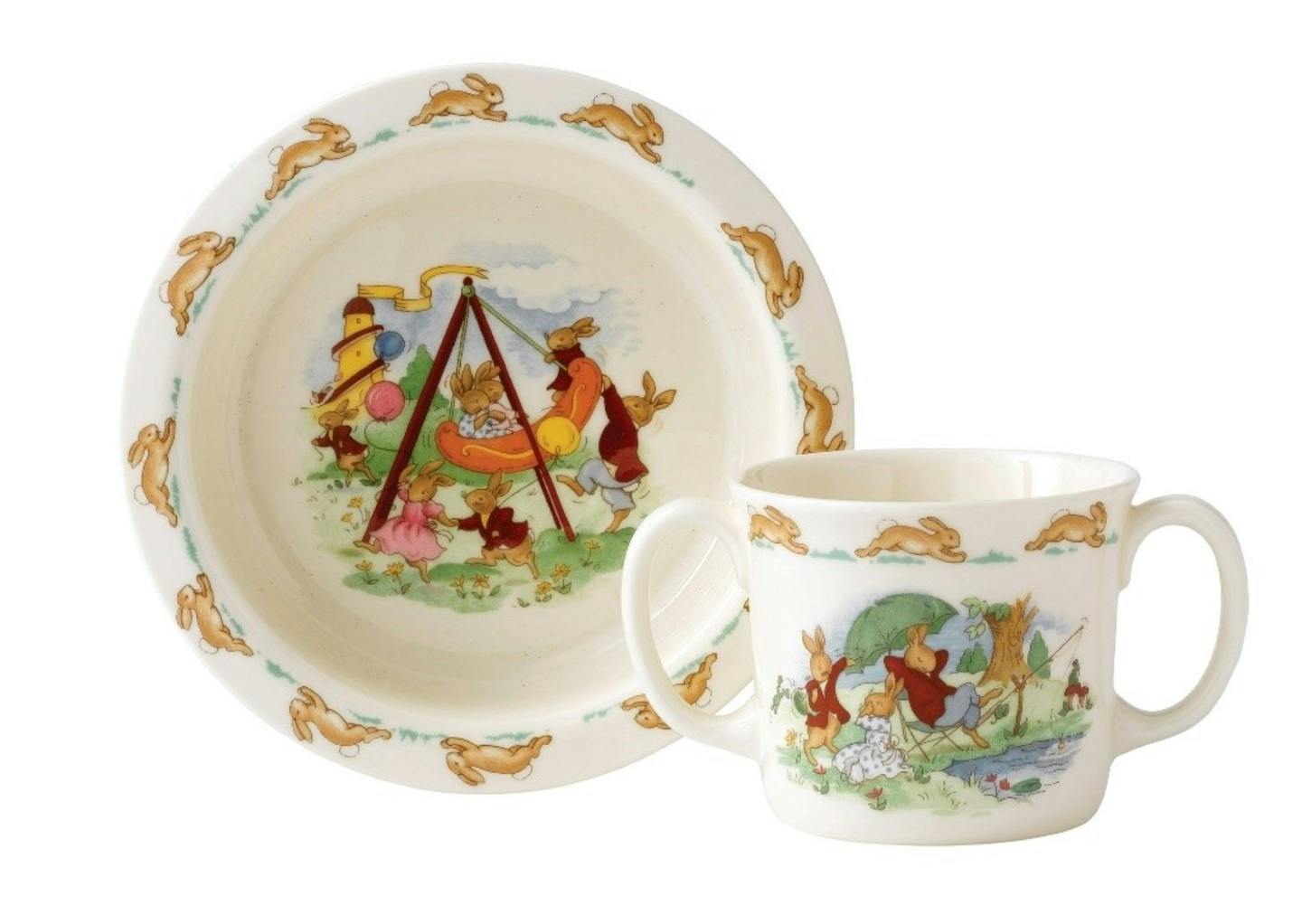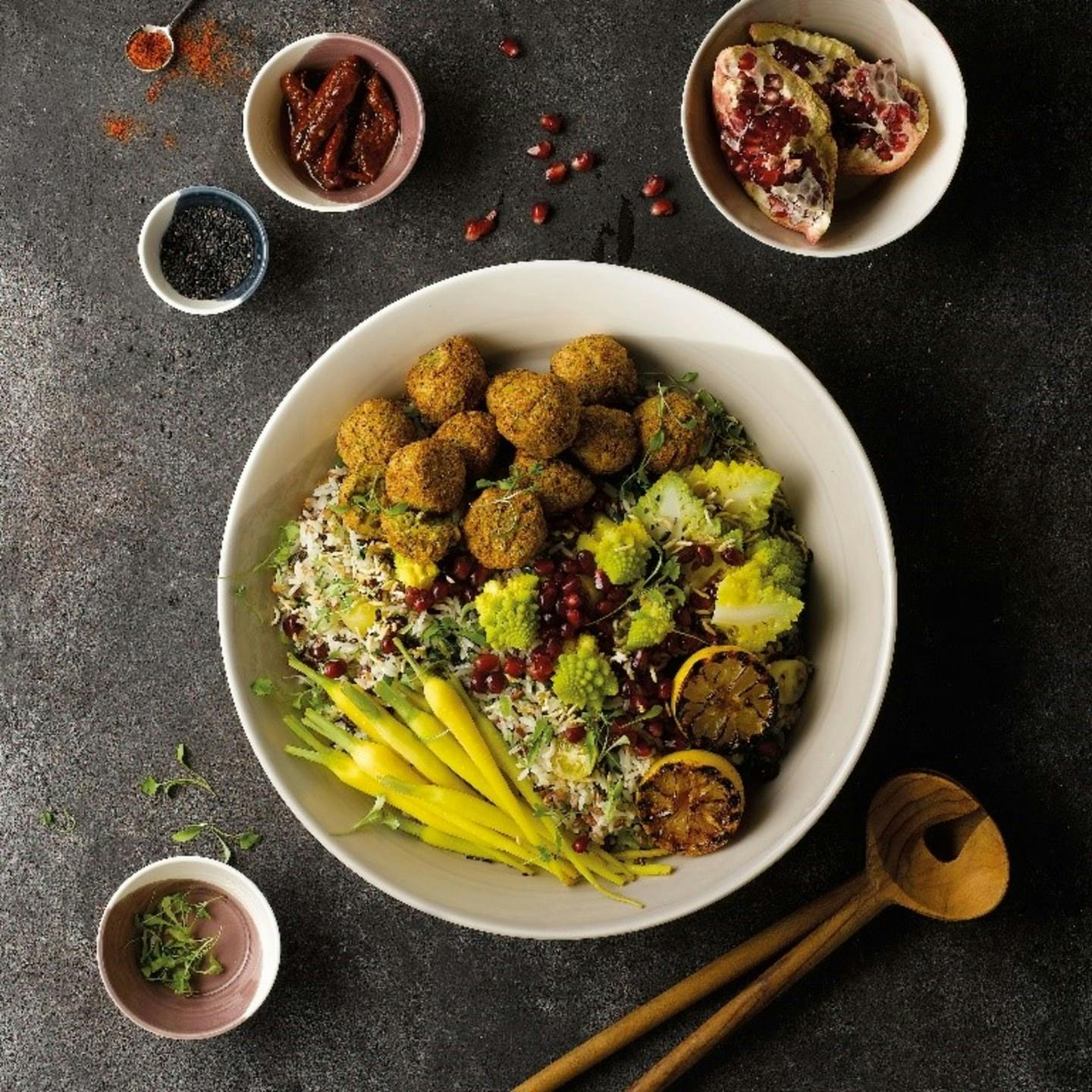The Royal Doulton Story

Royal Doulton is one of the most well-known British brands in the world. Their pedigree in tableware and ceramics dates back to 1815 when John Doulton invested his life savings into a partnership with Martha Jones at a Lambeth stoneware factory.
Martha, a recent widow, was searching for a business partner to join up with her and her foreman John Watts; John Doulton, already a skilled potter was the perfect partner. He duly invested £10 into the business, and thus Doulton & Watts pottery was established.
All these years later and Royal Doulton is an established leader in British tableware, collectable figurines and giftware.
Humble Origins

Despite now being known across the globe, the Royal Doulton origins were truly humble.
The factory specialised in manufacturing salt-glazed and stoneware ceramics, stone jars, bottles and flasks. Thanks to John’s son Henry, who joined the company in 1835, the business was able to take full advantage of the innovations in sanitation in Victorian Britain, by establishing as the world’s first stoneware pipe factory, which went on to become the foremost manufacturer of water and drain pipes in all of Britain.
A true pioneer of his day, Henry devised several very inventive ways of designing and engineering the pipes, which made Doulton & Watts renowned experts in the industry. Their wares were even displayed at Hyde Park’s Great Exhibition held in 1851.
Diversification & Royal Attention

In 1845, John Watts retired from the business, which took up the new name of Doulton & Company. 1860 saw the company move in another direction after Henry was encouraged to work alongside the pupils from the Lambeth School of Art – a decision which would form the brand that we know and cherish all these years later.
Their range extended to artistic pottery, which lead to the manufacture of commemorative, ornamental and elegant tableware. By the early 1870s, Henry Doulton had launched a successful Lambeth Studio with an array of local designers and artists, whose highly experimental work using a variety of glazes, patterns and materials is still in demand today.
Many of the school’s best graduates found work with Doulton & Company, including the likes of Hannah Barlow and George Tinworth. The pieces they created were on a different spectrum compared to the industrial pieces the company had previously manufactured. The experimentations with colour, modelling and decoration won fans across the globe.
One such distinguished admirer was none other than Queen Victoria herself, who knighted Henry Doulton in 1887 for his services to the progress of ceramics and art. However, royal interests in the Doulton name wouldn’t stop there; in 1901 the Burslem factory was granted the Royal warrant by the new King, Edward VII. This meant the business could design a striking new logo – the British lion – and adopt the famous name of Royal Doulton.
The World Wars & Beyond
Between the World Wars, the Royal Doulton name became synonymous with the very best English china. Experimentation and constant evolution were the keys to further growth, whether that be the flambeware range, titanian ware, or bone china.
Royal Doulton also launched Pretty Lady figurines in 1913, which were immensely popular. Under the leadership of the great Charles Noke, the company was able to diversify into Character Jugs as well. By the eve of the Second World War, the company also established the Bunnykins nurseryware collection – which is still a best seller.
In 1952 the artist Agnete Hoy joined Doulton at the Lambeth works. There she combined her unique style with the traditional Lambeth decorating techniques. The only pieces to be made in any number were a range of decorative ware to commemorate the Coronation of Queen Elizabeth II.
Hoy’s design studio and the Lambeth factory closed in 1956 due to clean air regulations preventing urban production of salt glaze. Following the closure, production was transferred to Stoke-on-Trent, although Lambeth remained the home of Doulton & Co. until 1971.

Technical and Commercial Growth
By the 1960s, Royal Doulton was well ahead of the competition with the introduction of English Translucent China, now better known as Royal Doulton Fine China. This range offered the superior translucent quality of bone china without the price tag. In 1966, the company also became the first ever china manufacturer to receive the Queen’s Award for Technical Achievement.

This was the start of a period of rapid growth for Royal Doulton, including many acquisitions such as Minton and Royal Albert. In 1974, Doulton introduced ‘Lambeth Stoneware' as a set of casual tableware ranges inspired by work from the original Lambeth studio. Then by 1993 Royal Doulton was listed on the London stock exchange; with a market value of between £150 million and £200 million.
By 1997, however, saddled with too much stock, Royal Doulton were forced to drastically reduce their range of products, cutting the number of tableware patterns by more than half, which coincided with a company restructure which impacted a fifth of the workforce.
Royal Doulton continued to adapt to the changing market and in 2005 became part of the Waterford Wedgwood group, which itself was rescued again in 2009 by the private equity company KPS Capital Partners.
The 200th anniversary in 2015 celebrated a company that has changed dramatically from humble origins while maintaining a commitment to heritage, craftsmanship and quality. The desire to create innovative, creative, useful and beautiful products has never waned.
Royal Doulton Today
In July 2015 Fiskars became the new owner of Royal Doulton, creating a family of premium tableware brands, including, Iittala, Royal Copenhagen, Royal Albert, Wedgwood and Waterford. The focus of Royal Doulton today is their classic 1815 tableware and collaborations with Michelin starred chefs, such as Gordon Ramsay and television personalities such as Ellen DeGeneres.
The LIVE BOLD campaign started in 2019, inspired by their London origins embracing the urban culture and eclectic style; empowering you to do the same.

Royal Doulton is one of the most well-known lifestyle brands in the world, covering everything from contemporary to traditional and oven wear to tableware. While it’s true to say that Royal Doulton is one of the oldest chinaware brands out there – it doesn’t mean to say they’re not up to date.
For more information about anything we’ve covered in this blog, contact us today or visit our Kenilworth showroom to view our extensive product range.
 GBP
GBP